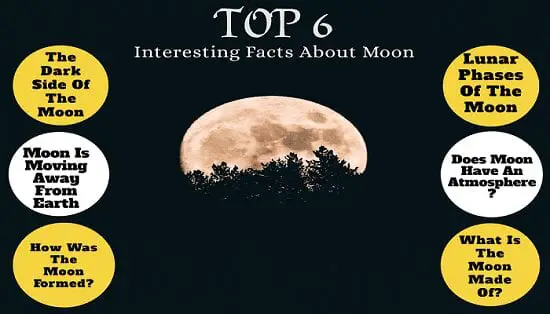The mysteries of our heliocentric planetary system will always be a riddle to be solved. Our solar system still has so many deep secrets to be unfolded. One of them is the facts about the moon. As we all know, Moon is by far the Earth’s only natural satellite and the second densest natural satellite after Jupiter’s satellite Io.
In this exclusive article, I will be giving you a brief analysis of the Top 6 Interesting Facts about the moon. Just for starters, here is the list of some of the fun facts about the moon that you definitely not wanna miss!!!
- Dark Side of the Moon
- Phases of the Moon
- How was the moon made?
- Does Moon have an atmosphere?
- Is the moon moving away from the earth?
- What is the moon made of?
Dark Side of the Moon
The very first one in my list of top 6 interesting facts bout the moon is that the moon does have a dark side. Moon is by far the closest celestial object that can be seen in the night sky. Thanks to Aristotle, we know for sure that all the heavenly bodies are round in shape.
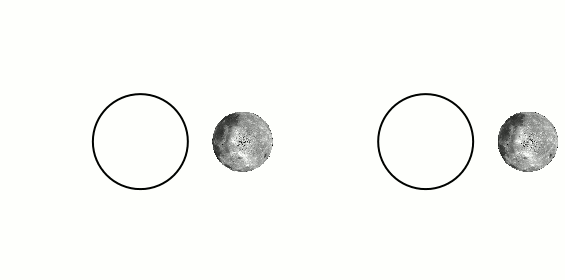
Therefore, just like any other heavenly body, Earth’s only natural satellite is bound to have two hemispheres. The two hemispheres of the moon are commonly known as the Near Side of the Moon and the Far Side of the Moon (sometimes also referred to as The Dark Side Of The Moon).
Editor’s Choice: Top 6 Obsolete cosmological Theories Of The Universe
Well, if we take pictures of the moon from Earth, what we see is The Near Side Of The Moon. Now the question arises what about the other side of the moon? Or, in other words, why can’t we see the dark side of the moon? Let’s find out!!!
Phenomena of Tidal Locking
The only reason behind the fact that why can’t we see the dark side of the moon is the synchronized motion between Earth and Moon. Or, in the language of physics, this phenomenon is widely known as Tidal Locking or Synchronous Locking.

Before going ahead, let me clear one thing i.e the dark side of the moon is not dark at all. In fact, people used to think like that only because it was unseen by humans. Not to mention, in terms of sunlight, both sides of the moon receive an equal amount of sunlight.
Finally, this controversial thinking about the dark side of the moon was debunked in 1959 when soviet spacecraft LUNA 3 took the first-ever pictures of the dark side of the moon. Therefore, as a result of that picture, it was cleared that the dark side of the moon is just a myth.
Must Read: Sun Facts – Top 6 Interesting Facts About The Sun
Phases of the Moon
The next one in my list of top 6 interesting fun facts about the moon is the occurrence of the phases of the moon. One of the most common and interesting pieces of information about the moon is that it appears to change its shape while revolving around the earth.
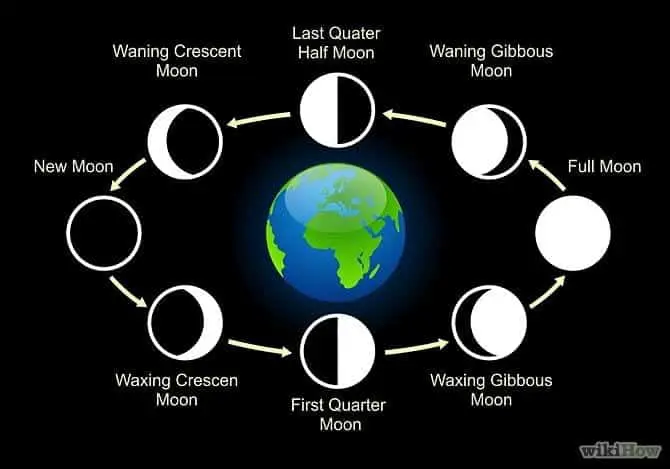
In the world of Astronomy, we call it the occurrence of the different phases of the moon. Not to mention, there are 8 Lunar Phases of the Moon that occur at a specific location on the Moon’s Orbit while revolving around the earth.
Technically speaking, all the phases of the moon can be divided into two sections. The primary phases of the moon are New Moon, First Quarter Moon, Full Moon, Last Quarter Moon.
Similarly, the Secondary Phases of the moon are Waxing Crescent Moon, Waning Crescent Moon, Waxing Gibbous Moon, and Wanning Gibbous Moon. Not to mention, only on a full moon day, a lunar eclipse can occur. In a similar manner, only on a new moon day, a Solar Eclipse can occur.
Related: Difference Between Solar and Lunar Eclipse (Tabular Form)
How was the moon made?
The next one in my list of top 6 interesting facts about the moon is its formation. Well, there are so many controversial theories related to the formation of the moon theory. For example, one of the theories suggests that the earth captured the moon from space.
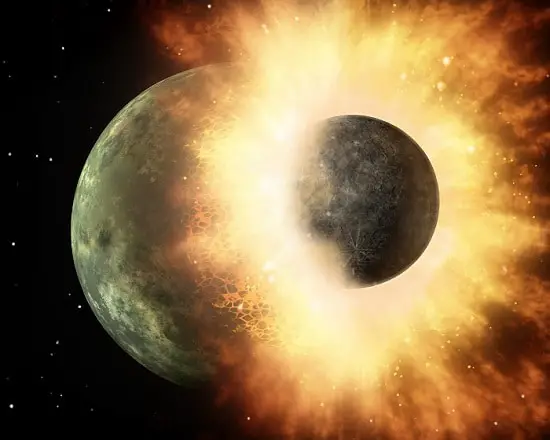
Another one suggests that the earth and moon were formed at the same time. And, after some billion years, the moon got fissioned out of the Earth. Out of all the controversial theories related to the origin of the moon, the most critically acclaimed, or, I can say widely accepted one by the scientific community is the Giant Impact Hypothesis.
Check Out: Earth Facts – Top 6 Interesting Facts About Earth
Clash of the Titans
According to the Giant Impact Hypothesis, the moon was formed because of the collision between the earth (called proto-Earth) and mars sized celestial object named Theia. I mean that’s why we also sometimes call this theory the Theia Impact.
Due to the Theia impact, the material from both Earth and Theia blasted out and went into orbit around Earth. After some time being passed, the debris leftover condensed and gathered together forming our natural satellite.
Must Read: Jupiter Facts – Top 6 Interesting Facts About Jupiter
Well, if you will ask about my personal view, I would say that questions like – Where Did The Moon Come From or Origin Of The Moon can never be solved with certainty because all we can do is hypothesize. I mean, maybe in the near future, some scientists could suggest that earth captured the moon from Mercury or Venus.
I would say that we should wait till the time that some physics guy develops a time-travel machine. And, with that, we could go by ourselves to see how was the moon formed some 4.5 billion years ago. Till then chill, relax, and see the next interesting moon facts.
Related: The Ultimate Guide to Top 6 Facts About Venus
Does Moon have an atmosphere?
Well, technically speaking, the moon does have an atmosphere, but quite a thin one; almost like a vacuum. I mean, if we compare the density of the Moon’s atmosphere with the Earth’s atmosphere.
The atmospheric pressure at the surface of the moon is quite similar to the density of the earth’s uppermost atmospheric layer where the International Space Station resides – which is almost regarded as a vacuum.
Take a look at Space Facts – Top 6 Interesting Facts About Space
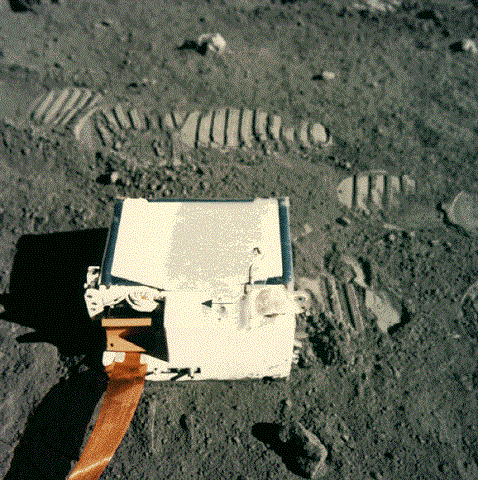
In fact, due to the non-availability of the atmosphere on the moon, the temperature on the moon varies drastically. Such that at daytime, the average moon temperature is approximately 127 degrees Celcius. And, at night time, the average moon temperature is minus 173 degrees Celsius.
Not to mention, there are some elements that are known to be present in the Lunar atmosphere such as Potassium, Sodium, Argon, Oxygen, Hydrogen, Helium, etc. In fact, there is some evidence for the presence of water vapors detected by chandrayaan-1 in the atmosphere of the moon.
Additionally, if we talk about recent research related to the presence of water on the moon, in August 2018, NASA confirmed that there is a presence of water ice on the surface of the moon around the moon poles.
Must Read: Mercury Facts -Top 6 Interesting Facts About Mercury
Is the moon moving away from the earth?
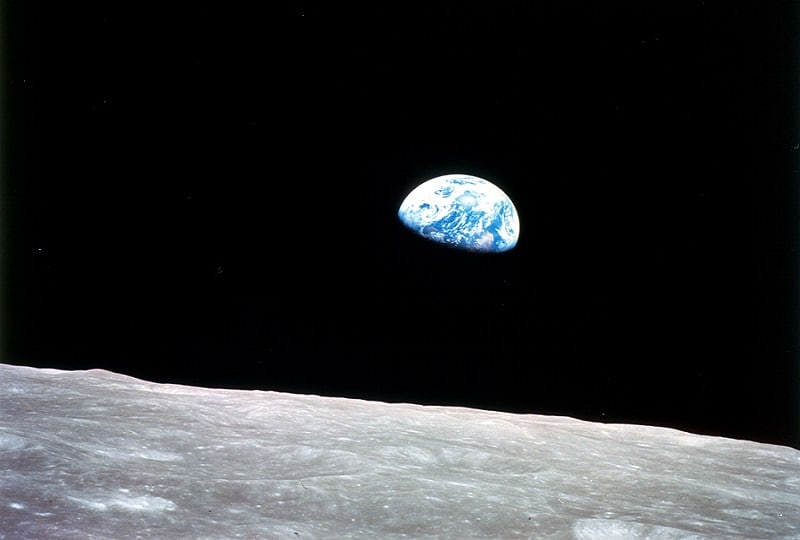
The next one in my list of top 6 interesting facts about the moon is that the moon is moving away from the earth. Yup, you heard me right. Some astronomers have calculated that the moon, in actuality, is moving away from Earth towards the Sun at the rate of approx 3.78 cm with each passing year.
Just to mention, without the presence of the moon around the Earth, the Earth will become unstable and could seriously affect life on the planet. But you don’t need to worry, this whole drifting process of the moon could take billions of years to happen. So chill !!!!
Check Out: Mars Fact -Top 6 Interesting Facts About Mars
What is the moon made of?
The last but not the least one in my list of interesting moon facts is the composition of the moon. What is the moon made of is still a mystery to be solved. Not to mention, we do know a bit about our natural satellite. Just like Earth, there are 3 layers of the moon i.e the Crust, Mantle, and, Core.
As per the research data available, the Moon’s Crust is mostly made up of Iron, Calcium, Magnesium, Oxygen, Silicon, and Aluminum. Additionally, the average thickness of the moon’s crust is estimated to be around 50 km. There is also evidence of Titanium, Uranium, Potassium, and Hydrogen presence in the moon’s crust.
Just below the moon’s crust resides the mantle of the moon. If we talk all about the Moon’s Mantle Composition, it is largely made up of Mineral Olivine, Orthopyroxene, and, Clinopyroxene, etc. The available evidence suggests that the Lunar mantle is more iron-rich as compared to Earth’s Mantle. The average thickness of the Lunar mantle is estimated to be around 50km.
The last but not the least layer of the moon is its Core. Well, the composition of the moon core is still not understood. Some scientists think that it is mostly made up of metallic iron. Though there are also some pieces of evidence for the presence of Sulfur and Nickel too. The average thickness of the lunar core is about 20 percent of the diameter of the moon.
Editor’s Choice: The unconventional guide to the top 6 solar eclipse facts
That’s it for this post. If you like this article, share it if you like it, like it if you share it. You can also find us on Mix, Twitter, Pinterest, and Facebook. If there are any suggestions, or I have missed something, feel free to comment.
